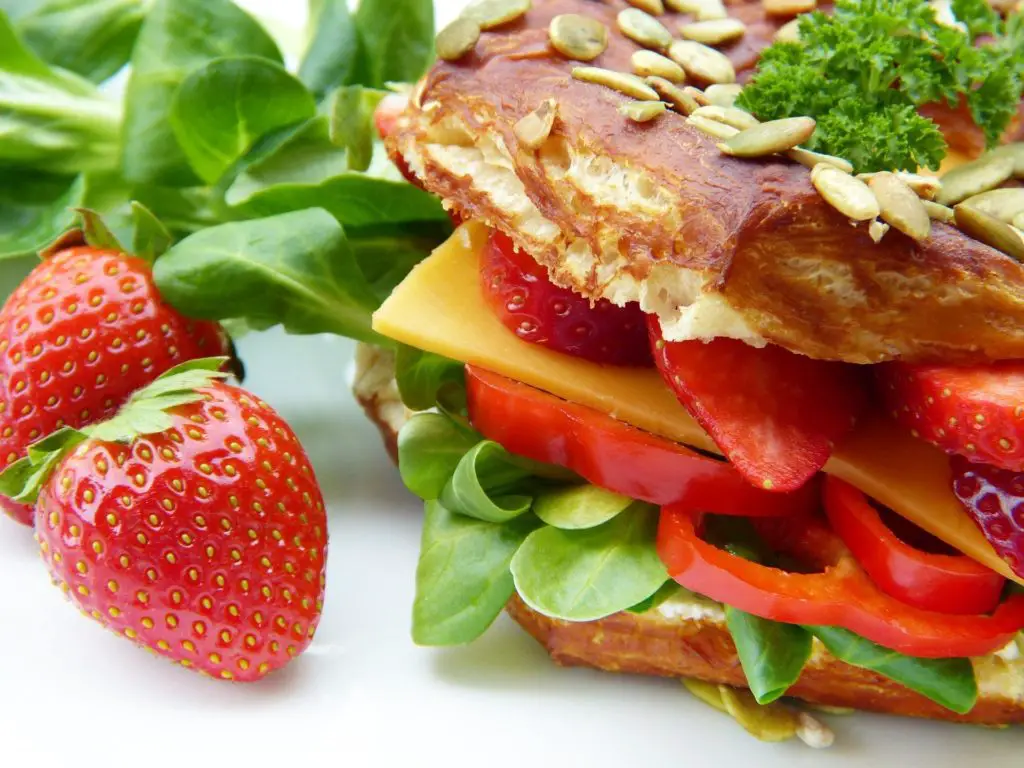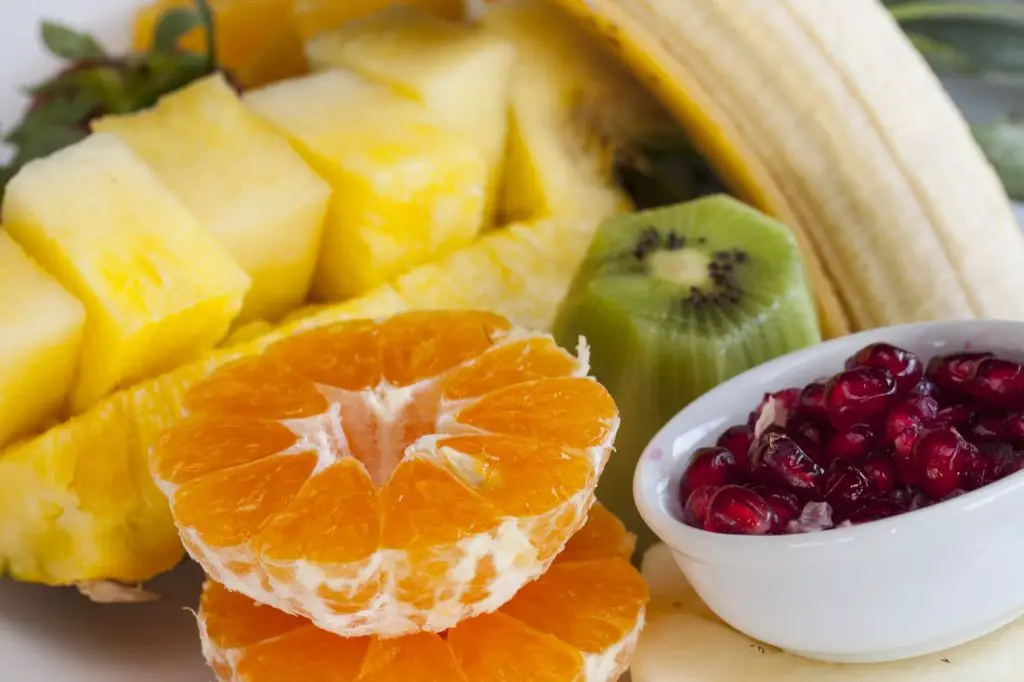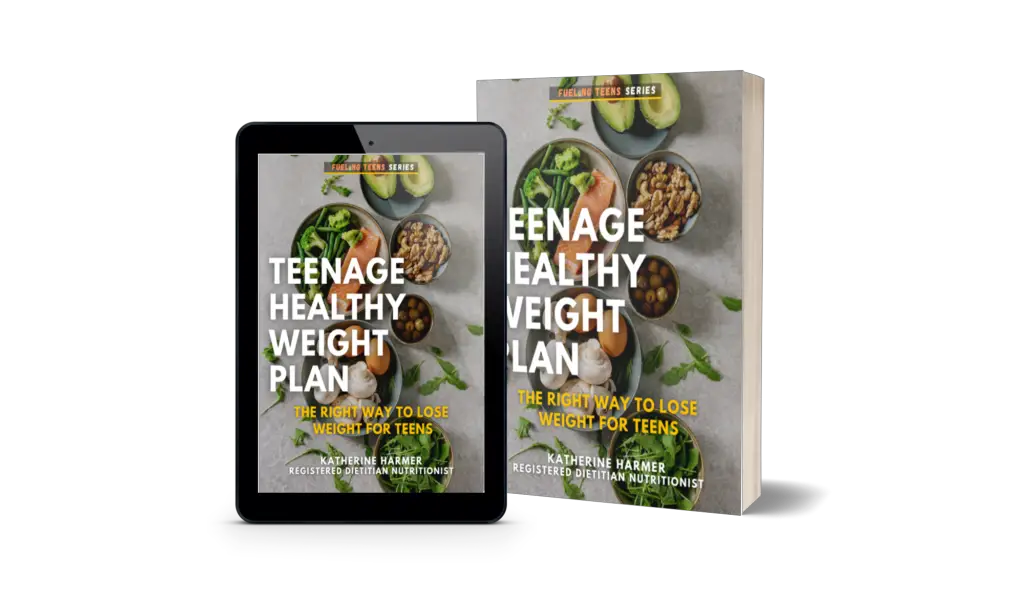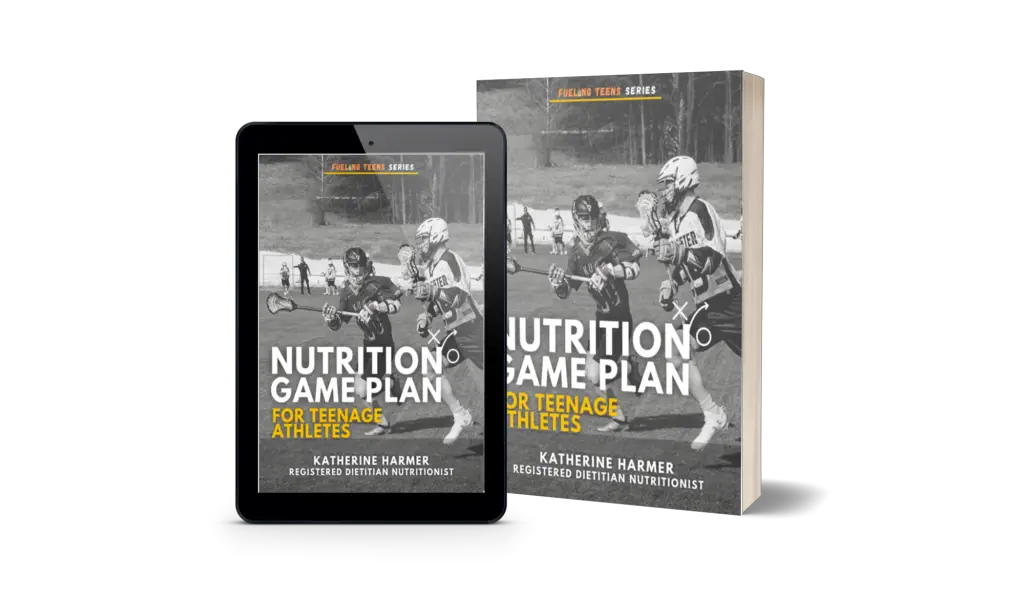The teenage years are crucial times of development and growth, as well as the time to build healthy lifestyles and nutrition habits. 14-year-olds are usually right in between that stage of childhood and adulthood, going through puberty, building muscle, growing taller, becoming more independent, and learning important skills.
Many teenagers don’t eat enough, some eat too much, and many don’t have adequate access to healthy foods. When possible, it’s extremely important that 14-year-olds eat enough calories each day to support their growth, learning, and daily activities.
14-year-old teenage females need an average of 2,000 calories per day and 14-year-old males need an average of 2,400 calories per day. Active teens may need even more calories each day, depending on activity level.
Interested to learn how to help your teen eat better and eat the right amount of food each day for optimum growth and nourishment? Keep reading to find some of the best tips for feeding a 14-year-old.

How Much Food Should a 14-Year-Old Eat?
I often use these calorie recommendation tables from the Dietary Guidelines for Americans 2015-2020. They give calorie estimates for teenagers based on age, gender, and activity level.
Individual needs may vary, but this chart can get you started in the right direction. Its not usually necessary for teenagers to strictly track calories, but it can be helpful to log food every once in a while to notice habits, trends, strengths, and areas for improvement.
Check out my post: “Should a Teenager Count Calories?“ for when it is appropriate and recommended for teenagers to log their food intake regularly.
Recommended Calorie Intakes for Teenagers:
Female Calorie Recommendations:
| Age | Not Active | Moderately Active | Active |
|---|---|---|---|
| 13 | 1,600 | 2,000 | 2,200 |
| 14-18 | 1,800 | 2,000 | 2,400 |
| 19 | 2,000 | 2,200 | 2,400 |
Male Calorie Recommendations:
| Age | Not Active | Moderately Active | Active |
|---|---|---|---|
| 13 | 2,000 | 2,200 | 2,600 |
| 14 | 2,000 | 2,400 | 2,800 |
| 15 | 2,200 | 2,600 | 3,000 |
| 16 | 2,400 | 2,800 | 3,200 |
| 17 | 2,400 | 2,800 | 3,200 |
| 18 | 2,400 | 2,800 | 3,200 |
| 19 | 2,600 | 2,800 | 3,000 |
Activity Levels:
- Not Active – Minimum activity, just daily movements (walking, stairs, chores, etc.).
- Moderately Active – Standard daily activities plus 30-40 minutes of physical activity.
- Active – Standard daily activities plus 40+ minutes of physical activity.
How Many Calories Does a 14-Year-Old Need Per Day?
So the average, moderately active 14-year old male needs around 2,400-2,600 calories per day, and 14-year old moderately active females need around 2,000 calories per day. Again, that’s just a rough estimation (but probably pretty close for many teens). More or less calories are needed based on physical activity amounts per day.
What 2,000-2,400 calories looks like in a day:
Most 14-year olds should divide their calorie recommendations between about 3 meals and 1-3 snacks per day to keep up with their calorie and nutrient needs. Meals should be about 500-700 calories each and snacks should be about 100-300 calories.
I made one-day sample menu plan ideas so you can get an idea of what that amount of calories looks like in a day from a balance of healthy and favorite foods.
Here’s a Sample Meal Plan For a 14-Year Old Girl at 2,000 Calories:
Breakfast: 1/2 cup oatmeal made with 1 tablespoon chia seeds and 1 tablespoon peanut butter, plus 1 banana, 1/2 cup blueberries, and 1 cup of 1% milk. 534 calories.
Lunch: Chicken pesto wrap, 1/2 cup cucumbers, 1/2 cup pretzels. 511 calories.
Snack: 1/4 cup hummus, 6 whole wheat crackers, and 1 cup celery sticks/baby carrots. 190 calories
Dinner: 2 slices veggie pizza, 1 cup green salad with 1 tablespoon dressing, orange slices, and 1 cup of 1% milk. 599 calories.
Snack: 8 oz lowfat Greek yogurt with 1/4 cup mixed berries and 2 tablespoons granola. 173 calories
Total: 2,007 calories, 126 grams of protein
Sample Menu Plan For a 14-Year-Old Boy at 2,400 Calories:
Breakfast: 2 eggs, 2 cups fruit/veggie smoothie, and 2 slices of whole wheat toast with avocado. 561 calories.
Lunch: chicken salad sandwich on whole wheat bun, 1/2 cup sugar snap peas, and 1/2 cup grapes. 630 calories.
Snack: PB&J sandwich. 350 calories.
Dinner: 1 cup meat and veggie lasagna, 1 slice garlic bread, 1 cup broccoli, 1 cup skim milk. 705 calories.
Snack: Small handful of trail mix and dried fruit. 173 calories.
Total: 2,419 calories

What Should a 14-Year-Old Eat in a Day?
The right diet for a 14-year old teenager includes fruits and vegetables, whole grains, dairy or dairy alternatives, protein foods, and healthy fats. It’s also important for adolescents to follow a diet high in nutrients (such as vitamins, minerals, fiber) and low in added sugars, salt, and saturated fats.
A Healthy, Balanced Diet for Teenagers Includes:
- Fruit and Vegetables: Choose 5 or more servings of fruits and vegetables per day. A serving size is about the size of your fist or 1 cup. Choose a variety of colors, types, and textures.
- Whole Grains and Starchy Foods: Choose 6-8 servings per day. A serving is equal to 1 slice of bread, 1/2 cup of cooked grains, etc. Choose whole wheat breads/pasta/crackers, sweet potatoes, oats, brown rice, quinoa etc.
- Dairy Products: Choose 2-3 servings per day. A serving size is about 1 cup. Choose low-fat dairy products (skim or 1% fat) of milk, yogurt, cheese, cottage cheese, etc. Fortified dairy alternatives are also appropriate.
- Protein foods: Choose 4-7 servings per day. A serving is equal to 1 ounce of cooked meat, 1 egg, 1/4 cup cooked beans, 1 Tablespoon of peanut butter, or 1/2 ounce nuts or seeds.
- Also, limit sugar, sodium, and saturated fat: Teens should limit highly processed foods and foods with too much sugar, salt, and fat, such as dessert, treats, candy, cakes, and sugary drinks. These foods are high in calories and low in nutrients. They should be the “sometimes foods” in a teenager’s diet, consumed in moderation, not consumed regularly.
See also: Nutrition Meal Plan for Teenage Athletes
How Parents Can Help Their 14-Year-Old Teen Eat Better
It can be tricky and difficult to keep your growing teenagers fed. They can go through a lot of food, especially during growth spurts. This is such a crucial time in their lives when their bones are strengthening, specific organs are developing, muscles are growing, brains are building, etc. Teens need a lot of calories and a lot of nutrients!
Do the best you can to feed your teenager a balance of enough healthy food. There are no off-limits foods, but less healthy treats and processed snacks and fatty foods should be consumed in moderation. Balance the occasional favorite food (pizza, burgers, fries) with healthier foods such as vegetables and fruits.
How Can A 14-Year-Old Gain Weight?
An underweight teenager (at the direction of a physician) should add some high-calorie foods into their diet in order to gain weight, but we’re not talking about fatty foods like pizza and ice cream. Some good choices would be whole fat milk products like yogurt, cottage cheese, cheese, and milk, and also nuts, avocados, nut butters, and seeds.
- Plan meals around starchy carbohydrates such as grains, potatoes, rice.
- Eat at least 5 servings of fruits and vegetables each day.
- Include protein at each meal, such as lean meat, fish, eggs, beans.
- Plan to eat 3 meals per day and 1-3 snacks. Do not skip meals.
- If there are underlying medical, emotional, or mental problems, check in with a doctor or dietitian.
How Can a 14-Year-Old Gain Muscle?
Recommendations are similar for a 14-year-old who wants to gain muscle. Eat balanced meals focused on lean protein, starchy carbs, and fruits and vegetables. Have protein at every meal and snack.
And be sure to exercise regularly including some cardio, strength training, and stretches. Protein powder and supplements are most likely not necessary, and often not appropriate for teenagers.
Check out my post: Is Whey Protein Safe for Teenage Athletes? If you need more protein, make a homemade protein shake with Greek yogurt, nut butter, flax or chia seeds, and milk. It will have just as much protein as many protein shakes.
How Can a 14-Year-Old Lose Weight?
You should only be concerned about a teenager’s weight if a doctor or dietitian has been tracking their weight change over time on a growth chart and is concerned. Typically, the goal for teenagers is not to lose weight, but to “grow into their weight” as they hit their growth spurts.
It isn’t wise to diet during the crucial years of growth and development. Restricting calories or nutrients may be harmful. Overweight teens should work with a physician and a dietitian in order to create a plan to focus on correct foods, add more physical activity, and eat an appropriate amount.
Focus on eating smarter, not eating less. An appropriate eating plan will help more than a diet. In some cases, weight loss may be appropriate, but it needs to be monitored by a physician and registered dietitian.
Parents of overweight teens should make healthy changes for the whole family, instead of targeting one child. This is an important time for adolescents to learn healthy eating habits and food preparation skills that will benefit them for the rest of their life.
If you are interested in weight loss as a teenager, it’s important to learn what advice is real and legitimate, and what just comes from fad diets and harmful sources. I’ve written an e-Book guide and month-long meal plan to help teens establish habits that will help them get to a healthy weight and maintain it. It will help teens develop attitudes and behaviors that will lead to a positive relationship with food and nutrition throughout their lives.
The book is available in the Downloads section of my website here – Downloadable Content.
Tips for Parents of Overweight Teens:
- Always keep fruits and vegetables on hand as quick snacks, easily accessible and ready-to-eat
- Control what food is bought and comes into the home. Parents are the gatekeeper and typically the ones responsible for the grocery shopping. If “junk” foods and packaged foods are plentiful, start to buy less and make healthier swaps week by week, a bit at a time.
- Switch over to a few healthier options for snacks and quick meals such as single-servings of yogurt, hummus, trail mix, cheese, etc.
- Strive to eat dinner at home as a family when possible. Include adolescents in the meal planning and prep.
- Don’t talk negatively about your weight and avoid dieting in front of your family and kids.
- Talk with your teen about body image. People come in all shapes and sizes and that’s okay!
- Encourage exercise as a family.
See also: How Can I Tell if my Teen is Overweight? Advice from a Dietitian
How Much Sugar Should a 14-Year-Old Eat?
The American Heart Association recommends children and teens should have less than 25 grams of added sugars per day, that’s 6 teaspoons worth. Added sugars can hide in many foods such as sauces, dips, bread, yogurt, etc. It can be difficult to stay within the guidelines without some simple swaps.
Here are some examples of what 6 teaspoons of sugar looks like (a whole day’s worth):
- 8 oz of soda (a typical can or bottle is 12 oz)
- 44 M&M candies
- 3 tablespoons of pancake syrup
- 6 Oreo cookies
- 3/4 cup vanilla ice cream
- 2 (6 oz) containers Yoplait yogurt
Not a lot of sugar, right? It’s easy to hit 6 teaspoons without even thinking you’re eating a lot of sweets! You shouldn’t eat all of those items in one day, because you’d go over on your sugar recommendation. Each one is equal to the recommended 25 grams in a day. Added sugars can be tricky, but by eating less processed foods, your sugar intake will be lower.
Check nutrition facts labels for added sugar, and look at ingredient lists for other types of sugar such as cane sugar, high fructose corn syrup, corn syrup, fruit juice concentrate, syrup, honey, molasses, agave, sucrose, maltose, fructose, etc.
Wondering about replacing sugar with artificial sweeteners for your teens? You might want to think twice. Check out my post Sugar-Free Teens? The Problem with Artificial Sweeteners for Children and Teens
Fueling Teens eBooks
Need more help with your diet this season? Get help from a registered dietitian nutritionist, check out my newest eBook: Nutrition Game Plan for Teenage Athletes
Includes:
- 40+ pages with insightful infographics
- 28-day meal plan to help you eat well and eat right
- Healthy Snack list
- Tips for Gaining or Losing Weight
- Calculations for Daily Calorie Needs, Protein Needs, etc.
- Supplement Recommendations
- Meal Schedule
- …And More
Also Available From Fueling Teens:
- FREE Downloadable Meal Plan for Teen Soccer (Football) Players
- Nutrition Game Plan for Teenage Basketball Players
- Nutrition Game Plan for Teenage Football Players
Related Questions:
How Much Protein Does a 14-Year-Old Need in a Day? Active teenagers need about 0.45-0.6 grams of protein per pound of body weight each day. Less active teens need about 0.3-0.4 grams of protein per pound of body weight each day. Research suggests that teens regularly eat 3 times (or more!) their protein recommendations in a day.
To find this number, multiply weight in pounds by 0.45 or 0.6 to get grams of protein. It should be pretty easy for teenagers to hit their protein recommendations without trying.
How Many Calories Should a Teenager Eat? The average teenager needs around 2,000-3,000 calories per day depending on how physically active they are. Calorie recommendations for teenagers are based on age, gender, size, and activity level. Check out the charts at the top of this post for specific recommendations.
How Can A Teenager Bulk Up? Teenagers looking to bulk up should follow a healthy eating pattern focused on lean proteins, starchy carbohydrates, and fruits and vegetables. Be sure to include lots of exercise as well. Eat about 20-30 grams of lean protein at every meal and about 15 grams at snacks.
Protein is a big focus, but not as important as gyms, body building magazines, and personal trainers make it sound. You don’t need hundreds of grams of protein per day. Protein powders are not necessary.
What are the Best Foods for Teenage Boys? Some of the best foods for teenage boys are eggs, fish, lean meats, beans and legumes, yogurt, oatmeal, seeds, nuts, leafy greens, sweet potatoes, avocados, and a variety of colorful fruits.
See Also:
- The Best Meal Plan for Teenage Athletes
- How Many Calories Should a Teenage Athlete Eat?
- Is Creatine Safe for High School Athletes?
- Is Whey Protein Powder Safe for Teenage Athletes?
- How Much Should a 16-Year-Old Boy Eat?
- Should A Teenager Count Calories?
- The BEST Pre-Workout Snacks for a Teen Athlete
- Is it Okay for Teens to Be Dairy-free?
References:
Dietary Guidelines for Americans 2015-2020
Written by Katherine Harmer, RDN
Fueling Teens is a participant in the Amazon Services LLC Associates Program, an affiliate advertising program designed to provide a means for sites to earn advertising fees by advertising and linking to Amazon.com. We also participate in other affiliate programs which compensate us for referring traffic.


